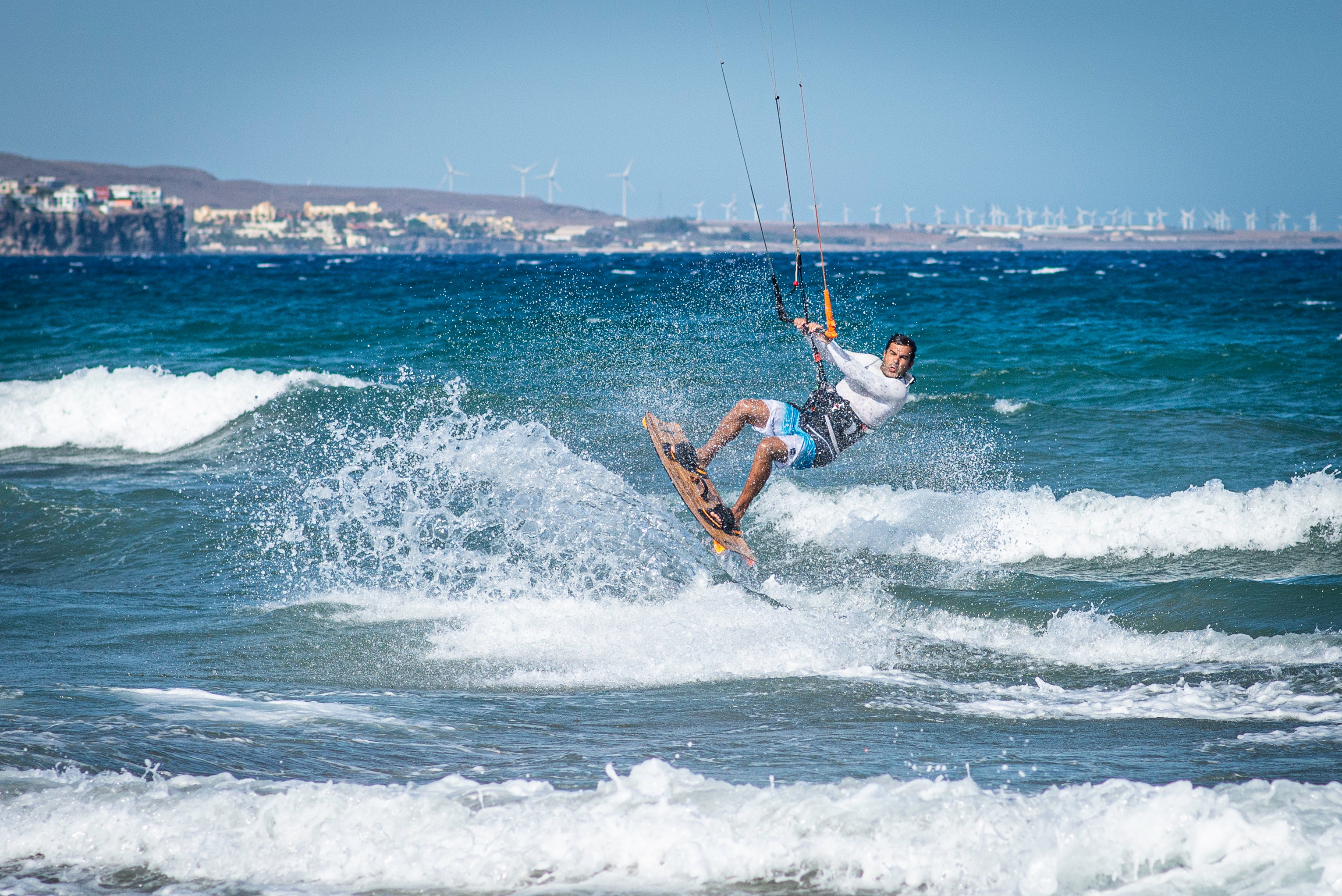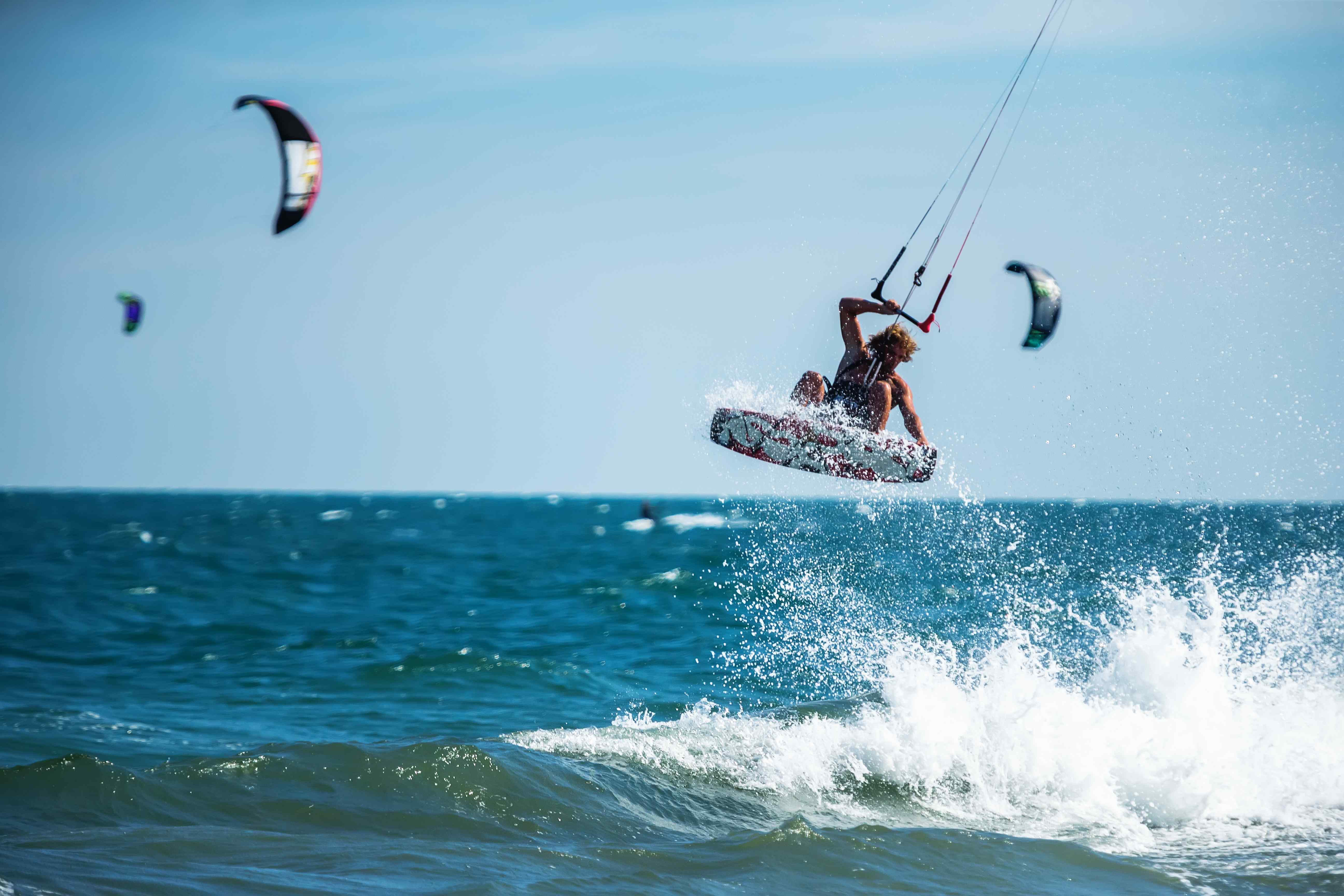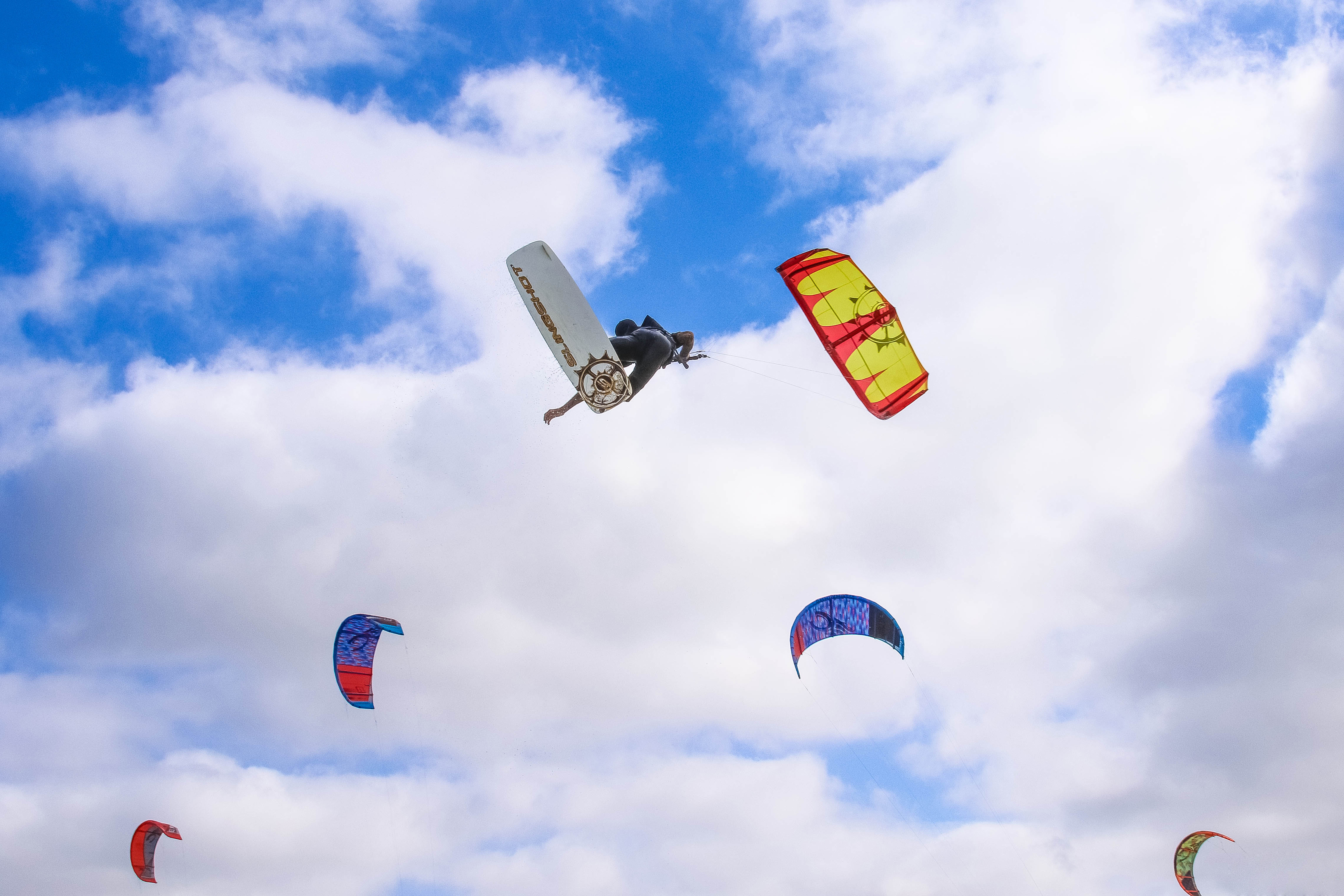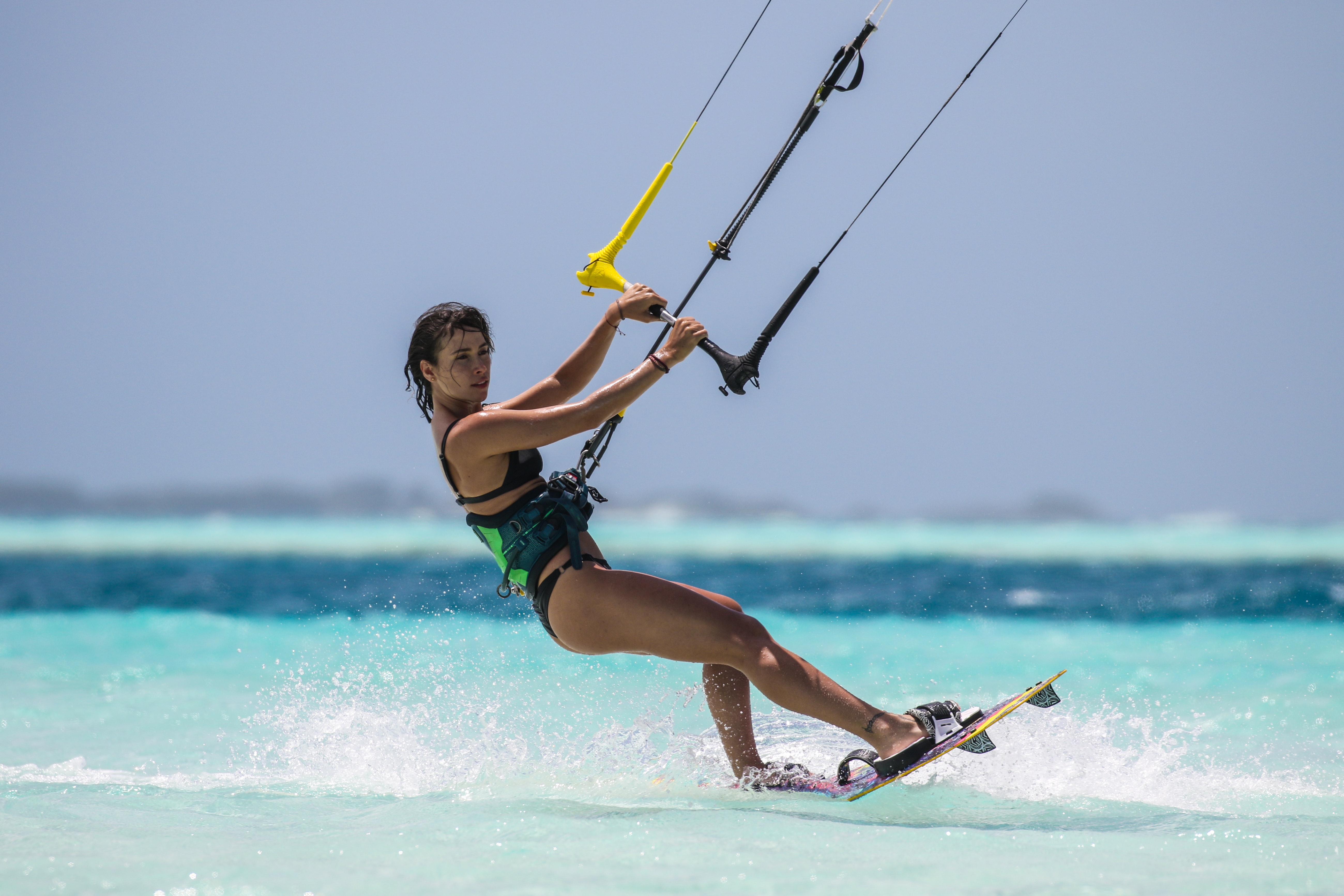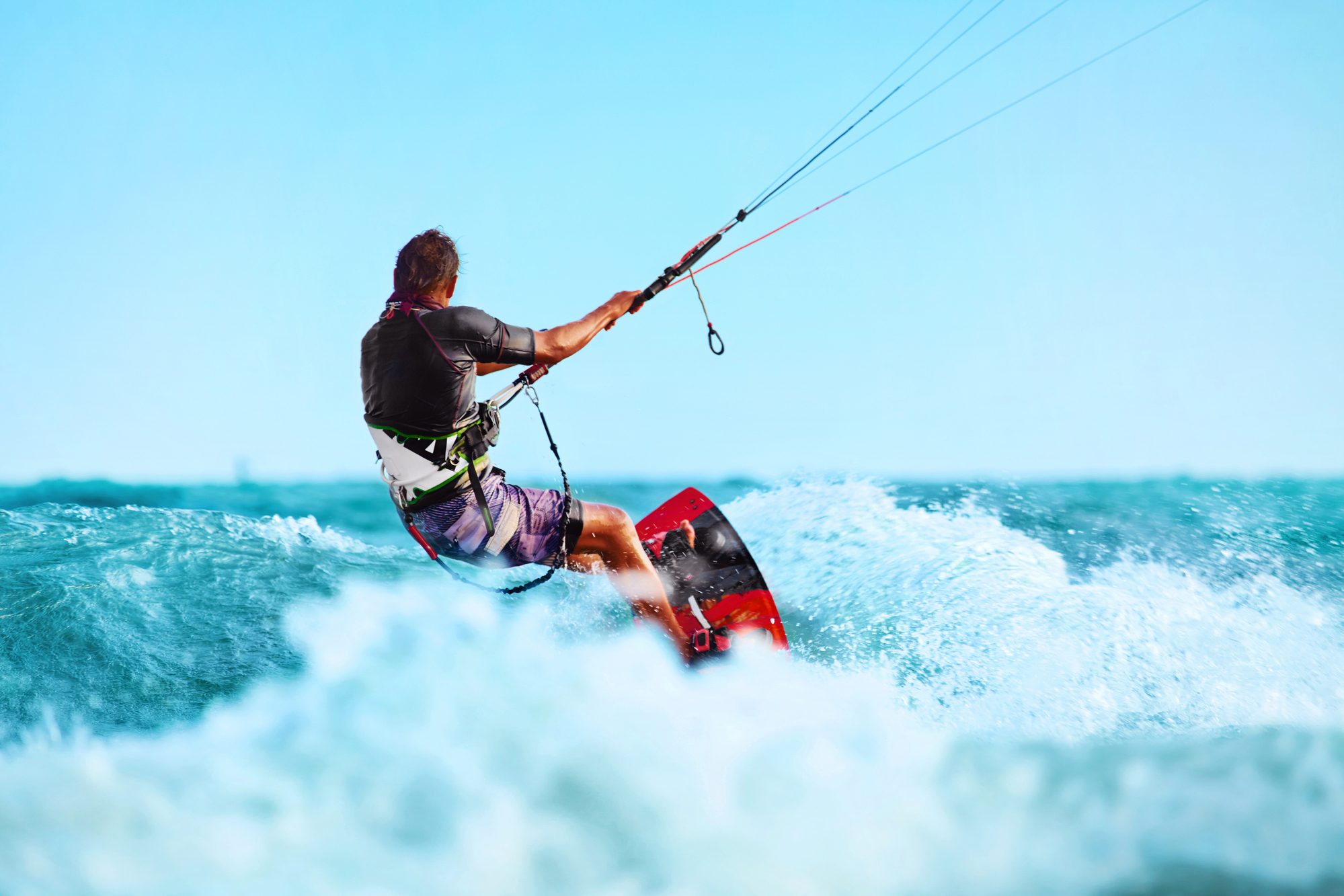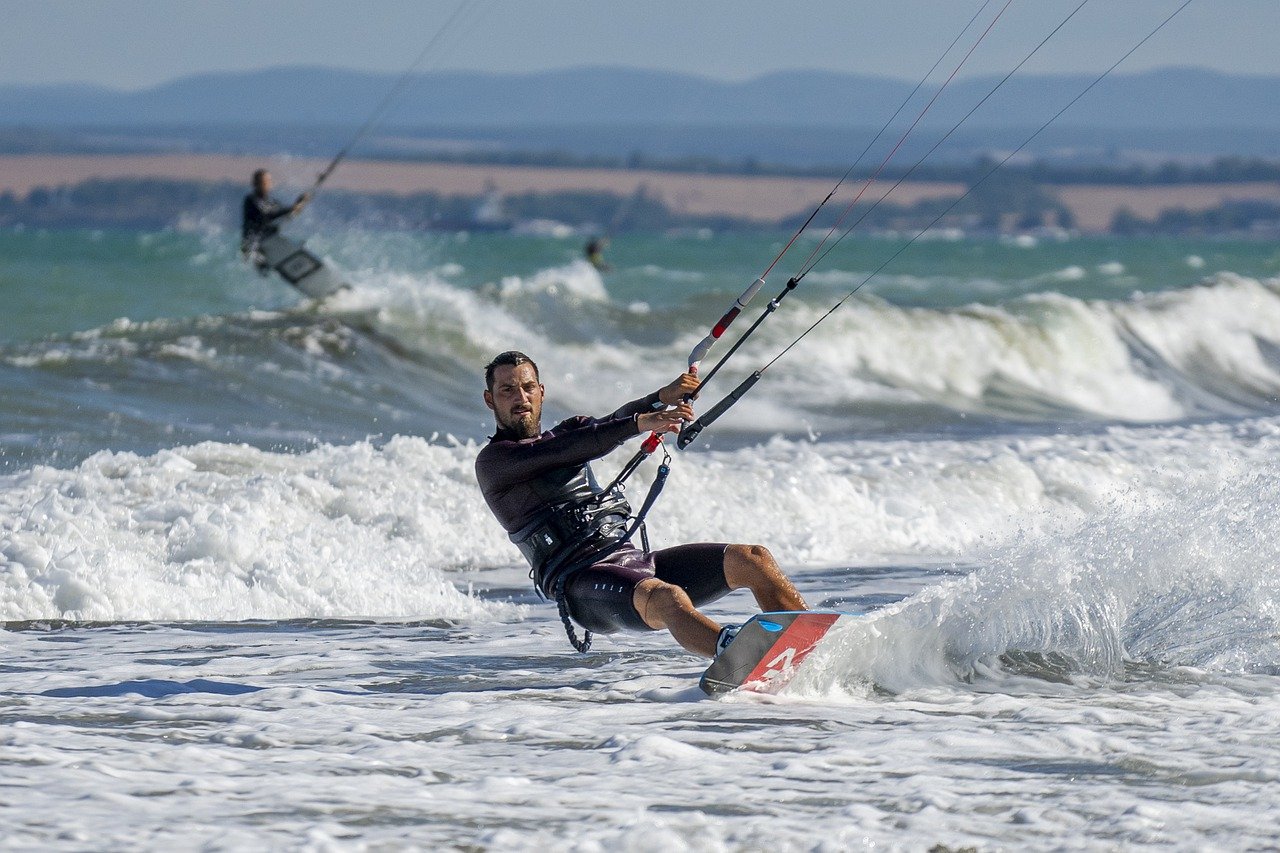Kiteboarding is a sport that has become increasingly popular in recent years. But with its growing popularity comes a lot of questions about whether or not it is safe.
It's considered an extreme water sport, and some risks are definitely involved. But is it more dangerous than other extreme sports?
Let's look at the truth about kiteboarding dangers and whether or not the sport is as dangerous as people make it out to be.
Why is Kiteboarding Considered an Extreme Sport?
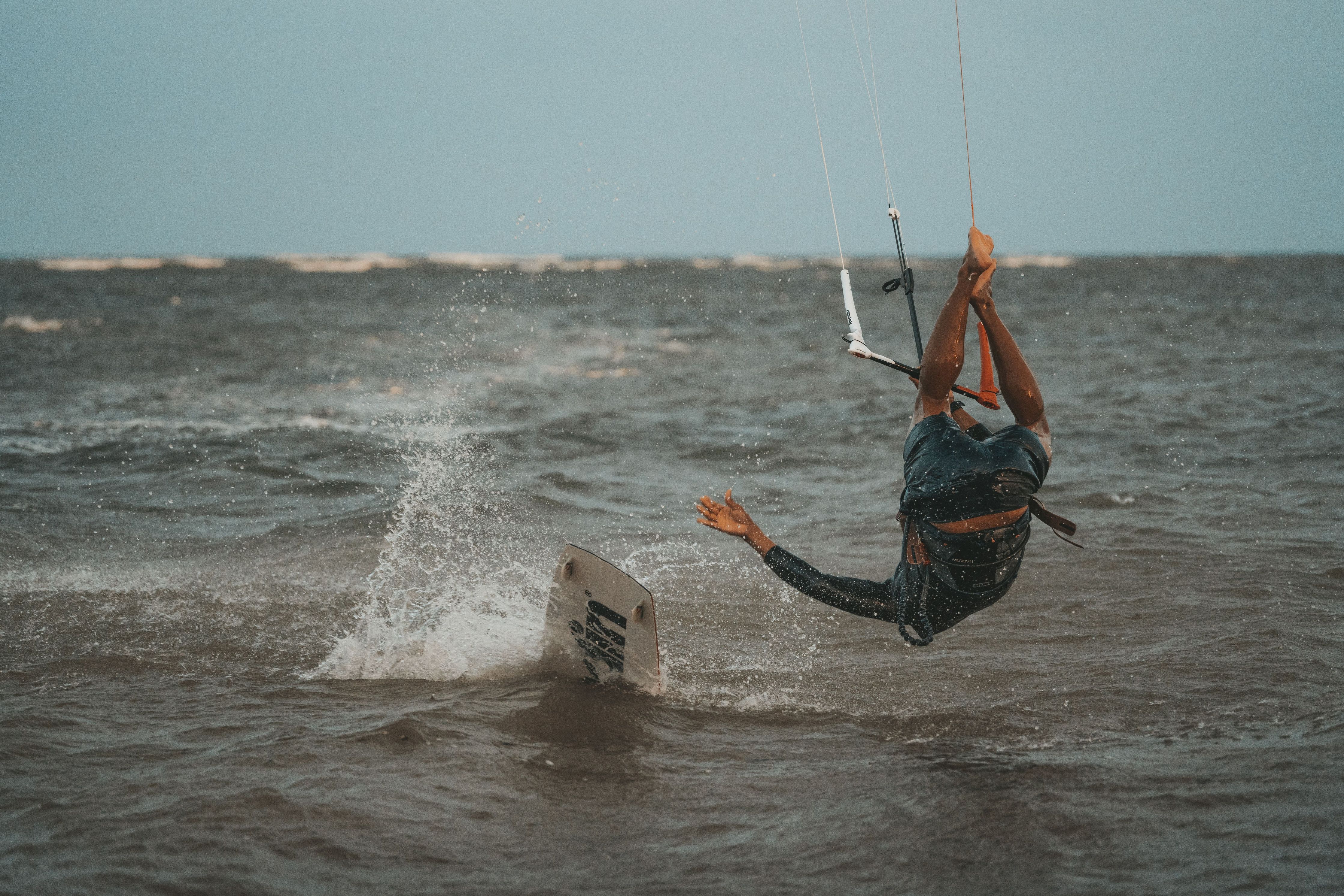
Kiteboarding is considered an extreme sport for a few reasons. First, it involves using a large kite to propel yourself across the water at high speeds.
This can be dangerous if you don't know what you're doing or the wind conditions are not ideal.
Another reason kiteboarding is considered an extreme sport is because it can be pretty physical. You need to have a lot of strength and stamina to stay up on the board for long periods of time.
Finally, kiteboarding can also be dangerous because it's easy to get carried away and overestimate your abilities. If you're not careful, you could end up injuring yourself or someone else.
Of course, these are just some of the risks associated with kiteboarding. There are others that we can't necessarily predict. But it's important to remember that these risks exist in any extreme sport.
What are Some of the Risks Associated with Kiteboarding?
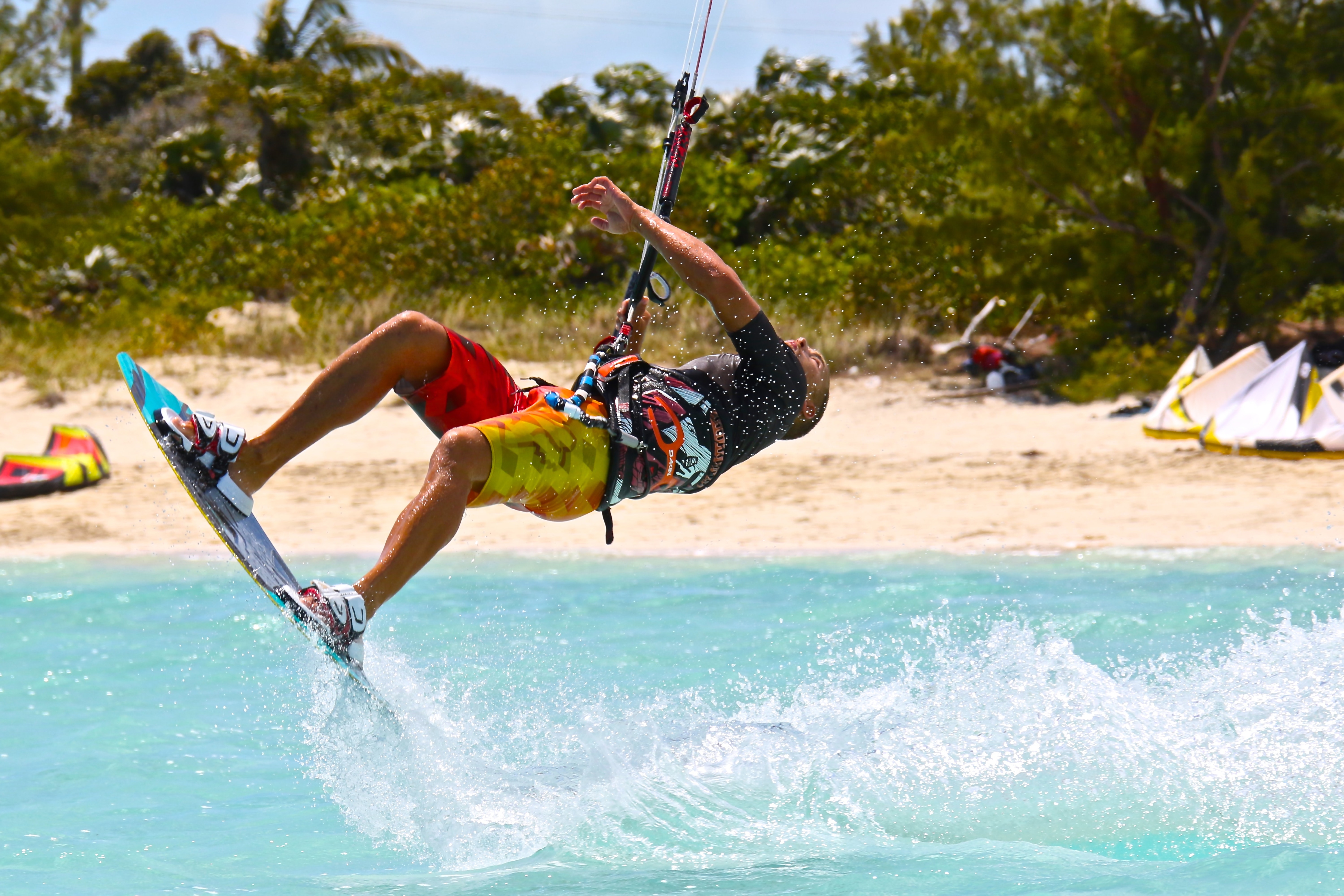
There are a few risks associated with kiteboarding that you should be aware of. Before we get into them, it's important to note that these risks can vary depending on your experience level, the wind conditions, and other factors.
It's vital that you always take precautions when kiteboarding and never push yourself beyond your limits.
Here are some of the risks associated with kiteboarding:
Health
Kiteboarding can be a physically demanding sport, and it's easy to push yourself too hard. This can lead to health problems like dehydration, heatstroke, or even heart attack.
It's essential to stay hydrated and take regular breaks when kiteboarding. You should also avoid doing any strenuous activity for the rest of the day after kiteboarding.
Kiteboarding can also lead to injuries, mainly if you fall off the board or crash into something. The most common injuries associated with kiteboarding are cuts and bruises.
However, more severe injuries like concussions or broken bones are also possible.
Underwater
Another risk to be aware of is underwater hazards. These can include things like rocks, reefs, and other obstacles that you might not be able to see when you're kiteboarding.
If you hit one of these hazards, it could cause serious injuries. That's why it's essential to always be aware of your surroundings and only kiteboard in areas that you're familiar with.
Keep your eyes peeled for sea urchins, jellyfish, and other creatures that might cause problems if you come into contact with them.
People
If you're not careful, you could end up hitting someone else with your kite or board. This could cause serious injuries, particularly if the person is hit in the head.
Your lines could also get tangled with someone else's, which could lead to a crash. Worst case scenario, someone could get pulled into the water by your kite.
Obstacles
Sometimes, when the wind conditions are too strong, you can end up going much faster than you anticipated. This can make it difficult to avoid obstacles like buildings, trees, or even a road.
Even when you're already in the water, you can still run into obstacles like rocks, reefs, and other kiteboarders.
If you're kiteboarding in an unfamiliar area, make sure to ask locals about any potential hazards, and never kiteboard alone.
Equipment
Another risk to be aware of is equipment failure. This can include things like your kite or board breaking or your lines getting tangled.
When you're far away from the shore, it can be challenging to get help if something goes wrong. So it's important to always check your equipment before you kiteboard and have a backup plan in case of emergency.
Weather & Nautical
The weather and nautical conditions can be unpredictable, changing very quickly. This can make it challenging to kiteboard safely.
Before you go out, always check the weather forecast and be aware of any potential hazards. If the conditions look dangerous, it's best to stay onshore.
Even if the conditions look safe, it's always a good idea to start slowly and increase your speed as you become more comfortable.
Assessing the weather and nautical conditions can be difficult if you're a beginner. It's best to start in a safe, controlled environment like a kiteboarding school.
What Safety Gear is Needed for Kiteboarding?
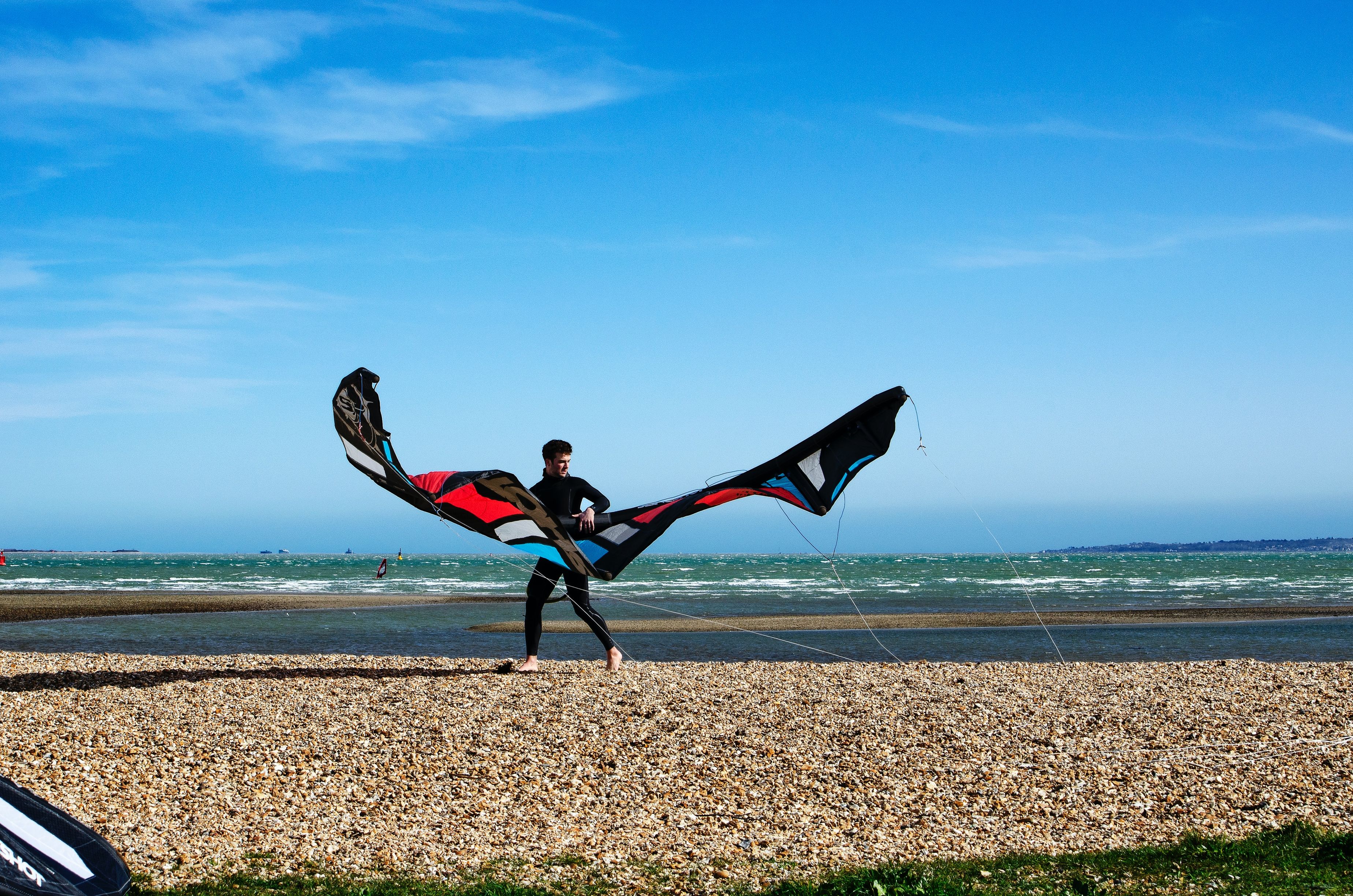
Kiteboarding safety gear is one of the most important ways to avoid injury, whether you're a novice or an expert.
As you stock up on everything you'll need for this water sport, remember to include the necessary safety equipment.
Knife
One of the most critical pieces of safety gear is a knife. This can come in handy if you get tangled up in your lines or need to cut yourself free from your kite.
Make sure to choose a knife that is easy to use and won't rust in saltwater. Knives sometimes come with kiteboarding harnesses, and you could also purchase them separately.
Flotation Aid
Another essential piece of kiteboarding safety gear is a flotation aid. This will help you stay afloat if you're knocked unconscious or otherwise unable to swim.
There are many different types of flotation aids available, so choose one that is comfortable and easy to use.
Even a simple life jacket can be a good flotation aid for kiteboarding, and it's something you're likely to have with you already.
Gloves
Gloves are another vital piece of safety gear, and they're instrumental if you fall onto something sharp.
There are many different types of kiteboarding gloves available, so choose a comfortable pair that won't interfere with your grip on the bar.
Some gloves even come with built-in padding to help protect your hands from injuries.
Durable gloves are a must for kiteboarding, as the sport involves a lot of contact with abrasive surfaces.
Glasses
If you're kiteboarding near the shore, there's a good chance you'll get sand in your eyes. This can be painful and can also cause vision problems.
That's why it's important to wear glasses or goggles while kiteboarding. Being under the sun for an extended period of time can also be harmful to your eyes, so choose a pair of glasses that offer UV protection.
There are many different types of kiteboarding glasses and goggles available, so choose a comfortable pair that don't fog up.
Helmet
A helmet is another important piece of kiteboarding safety gear. This will protect your head if you fall or collide with something while you're kiteboarding.
There are many different types of kiteboarding helmets available, so choose one that is comfortable and fits well.
A good kiteboarding helmet should be lightweight and well-ventilated so that you don't overheat while you're wearing it.
Harness
A kiteboarding harness is an essential piece of safety gear, and it's one you're likely to use often.
It's responsible for attaching you to the kite, and it's what you'll use to control the kite. There are many different types of kiteboarding harnesses available, so choose one that is comfortable and easy to use.
A good kiteboarding harness should be lightweight and adjustable to customize the fit.
Are you wondering how much all of this costs? Check out our article how much does kiteboarding cost.
Is Kiteboarding Safe for Beginners?
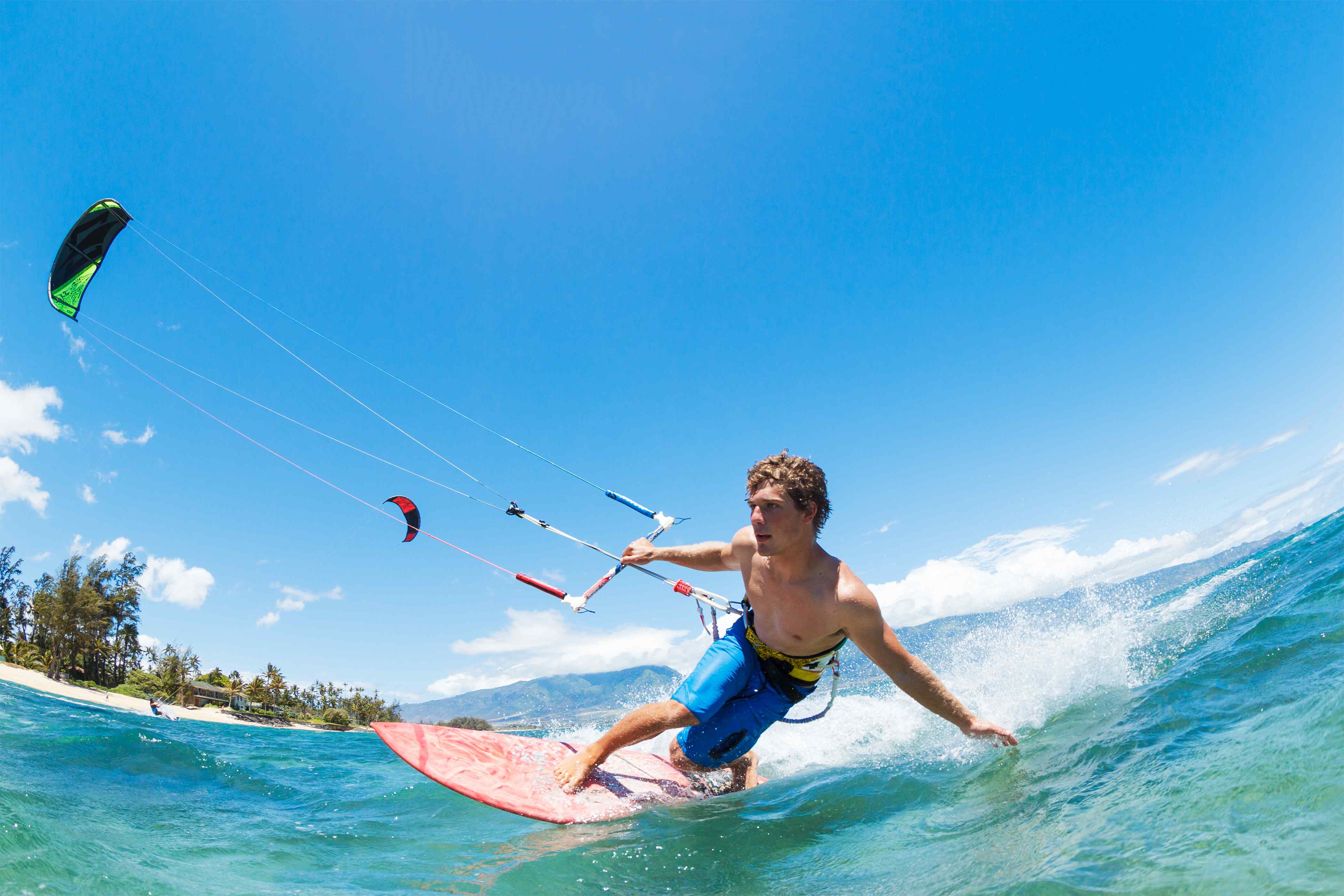
Absolutely! Kiteboarding is a safe sport when it's practiced in the right conditions. However, before you head out on your own, learning the basics from an experienced instructor is essential.
Kiteboarding can be dangerous if you're not adequately trained and don't know how to assess the weather and nautical conditions.
That's why it's essential to always use the proper safety gear and never kiteboard in unsafe conditions.
After all, riding the waves is much more fun when you're safe and sound!
Conclusion
Navigating the list of hazards associated with kiteboarding may be challenging, but there is always a risk when participating, just like any other sport.
But in comparison to other sports, the benefits of kiteboarding seem to outweigh the risks for most people.
Educate yourself on proper safety measures, choose the right gear, and don't kiteboard in unsafe conditions.
By following these simple steps, you can enjoy kiteboarding without putting yourself in unnecessary danger.
Have fun, and stay safe out there!

